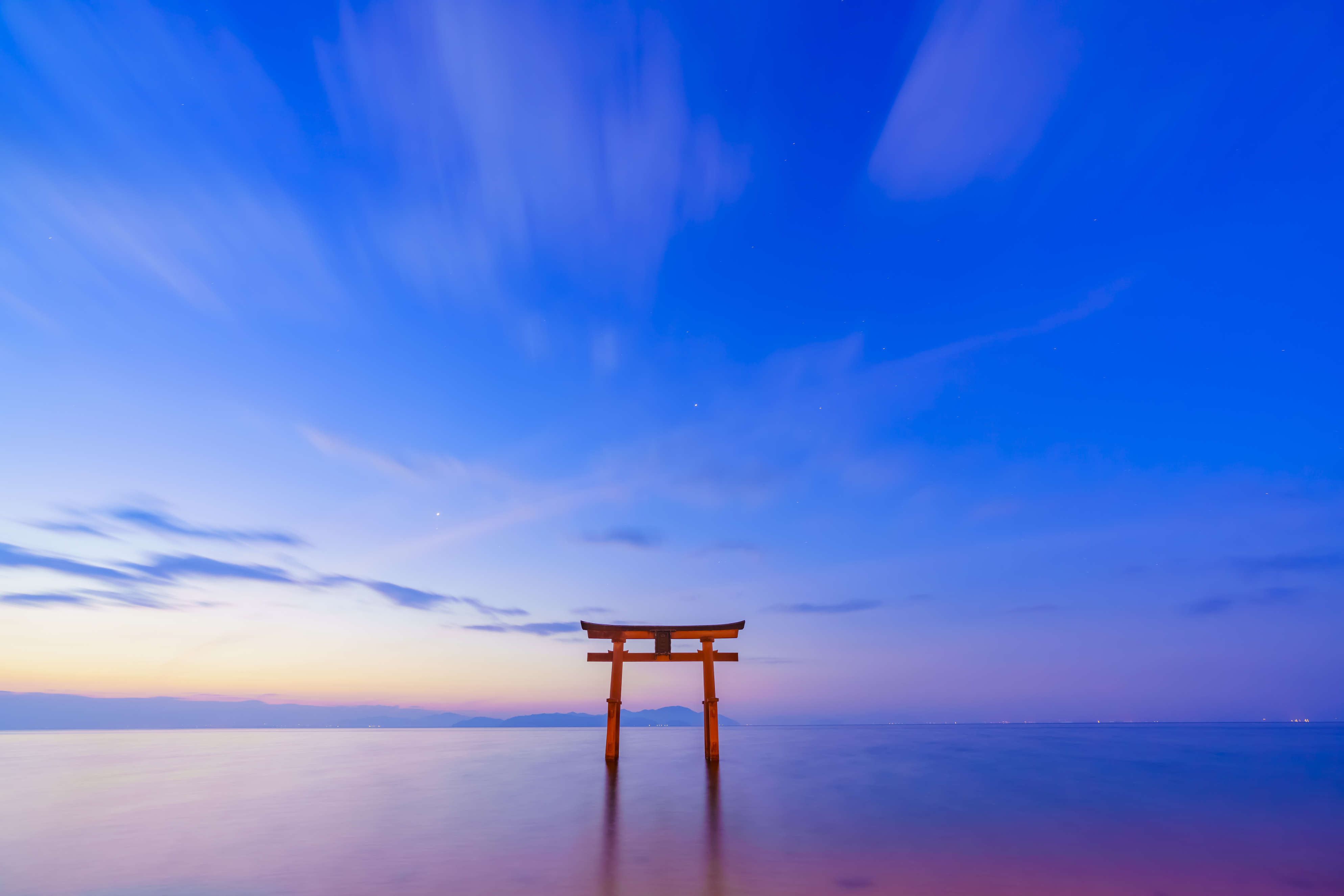
There is perhaps no more iconic structure that screams ‘Japan’ than the torii gate. Hundreds of thousands of torii dot the landscape of Japan’s islands, marking the boundary between the everyday and the sacred at Shinto shrines, and more than a few Buddhist temples too. Whenever people think of torii gates, their memories and imaginations usually blaze with those painted in the classic vermillion hue, arranged neatly into winding tunnels or floating above the waves.
But as a Shinto expert and a somewhat internet-famous “torii maniac,” I’ve made it my mission to tell the whole world that torii are much more interesting and more diverse. Torii come in an incredible variety of shapes, sizes, and colors, each with their own personality. Some are even made of glass, ceramic, speakers, and Legos. Don’t believe me? Let’s explore Japan’s rainbow torii!
Red
Why are so many torii red? For starters, they are technically vermillion, a shade somewhere in between red and orange. There are a lot of different reasons why a torii is colored vermillion. One major reason is that vermillion paint is made from cinnabar, a type of ore related to mercury with chemical properties that help preserve wood by fighting destructive bacteria and insects like termites.

Red is also a lucky color in East Asia, and according to ancient theories about the five phases/elements, the color red is associated with the south. If you stood under these red torii with a compass, you’d find that a lot of them really do face south! Finally, shrines with red torii may have a strong connection to Buddhism. In the past, the line between Shinto and Buddhism was not always clear, and one of the ways shrines—like Fushimi Inari Grand Shrine in Kyoto and Usa Jingu in Oita—keep those connections alive is through their bright vermillion architecture.
Yellow
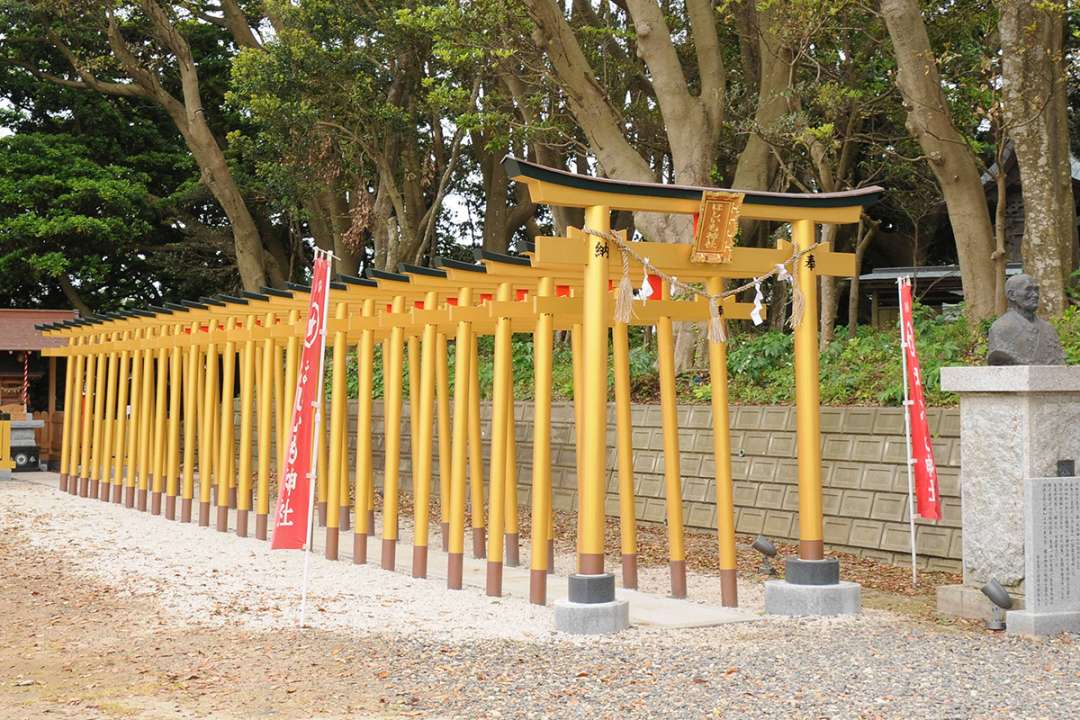
Feast your eyes on the yellow torii of Hoshiimo Shrine in Ibaraki! This shrine is dedicated to the area’s delicious specialty—dried sweet potato (hoshi imo). Thanks to this association, Hoshiimo Shrine’s torii are the same rich, buttery color. If you visit, make sure to stop by the sweet potato vending machine and leave your sweet potato-shaped wishes!
Green
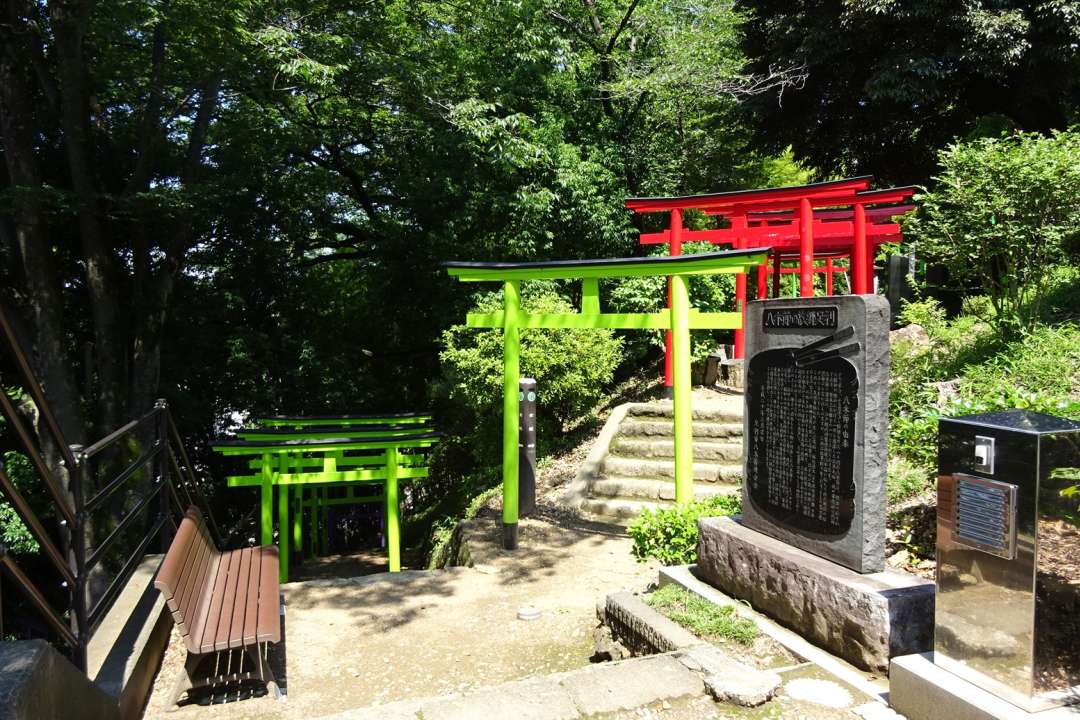
Green torii are pretty rare, but they exist! The green torii on the rainbow torii walk at Ashikaga Orihime Shrine in Tochigi Prefecture come in two different shades. Dark green represents wisdom and intelligence, while the chartreuse torii represents academic studies. Next time you have to make a difficult decision or need some confidence for passing an exam, why not think green and take a walk through this shrine’s torii tunnel?
Blue
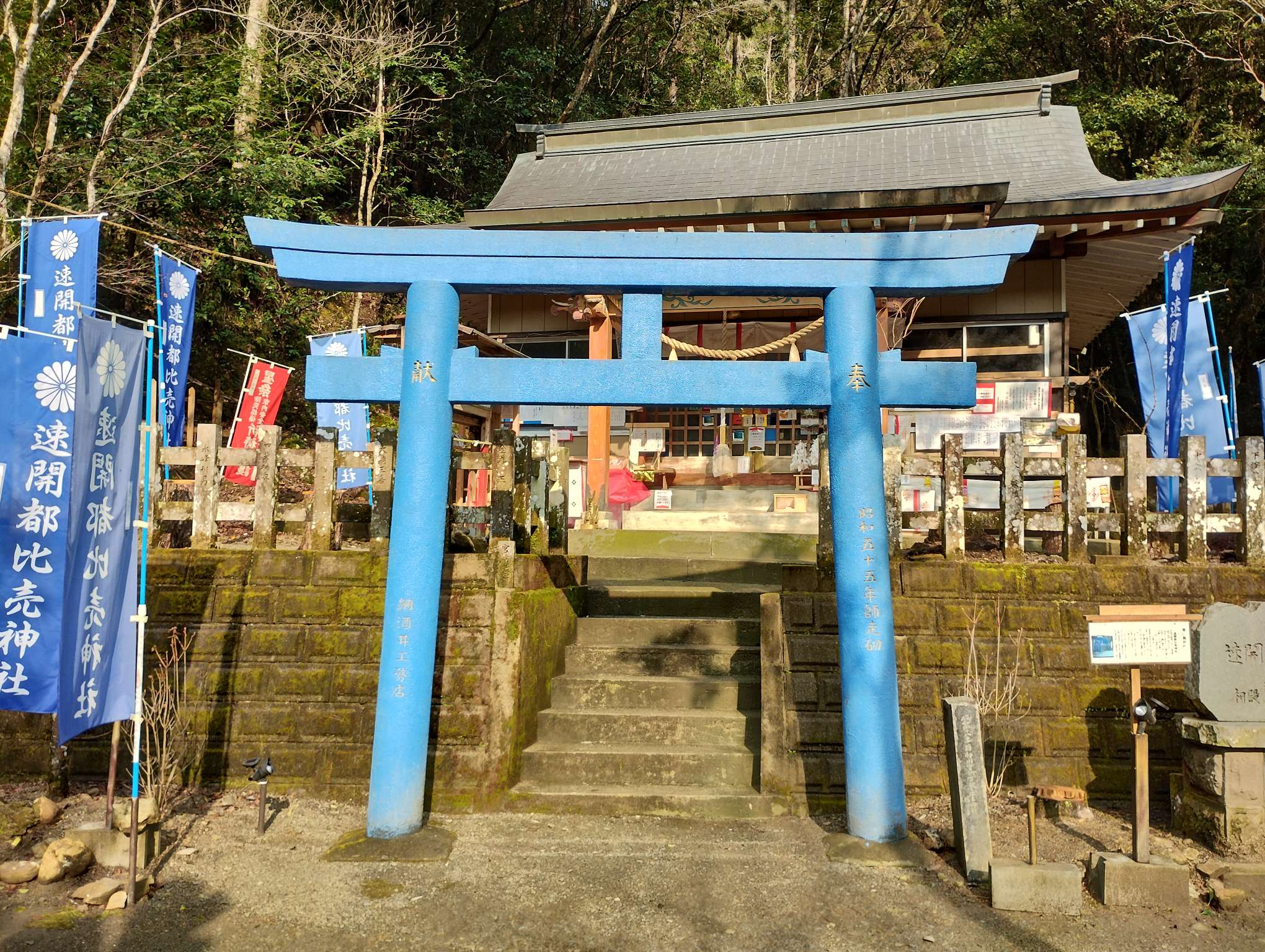
Just like red is associated with the south, the color blue is associated with the east. Shrines also choose the color blue because it resembles the ocean. Miyazaki Prefecture has two shrines with striking blue torii, Minato Shrine and Hayaakitsuhime Shrine, and both are dedicated to gods (kami) of the sea. Shinto is often thought of as a “religion of the forest,” but many shrines also have a deep connection to the ocean. (Learn more about Shinto, the sea, and video games on Eat Pray Anime!)
Purple
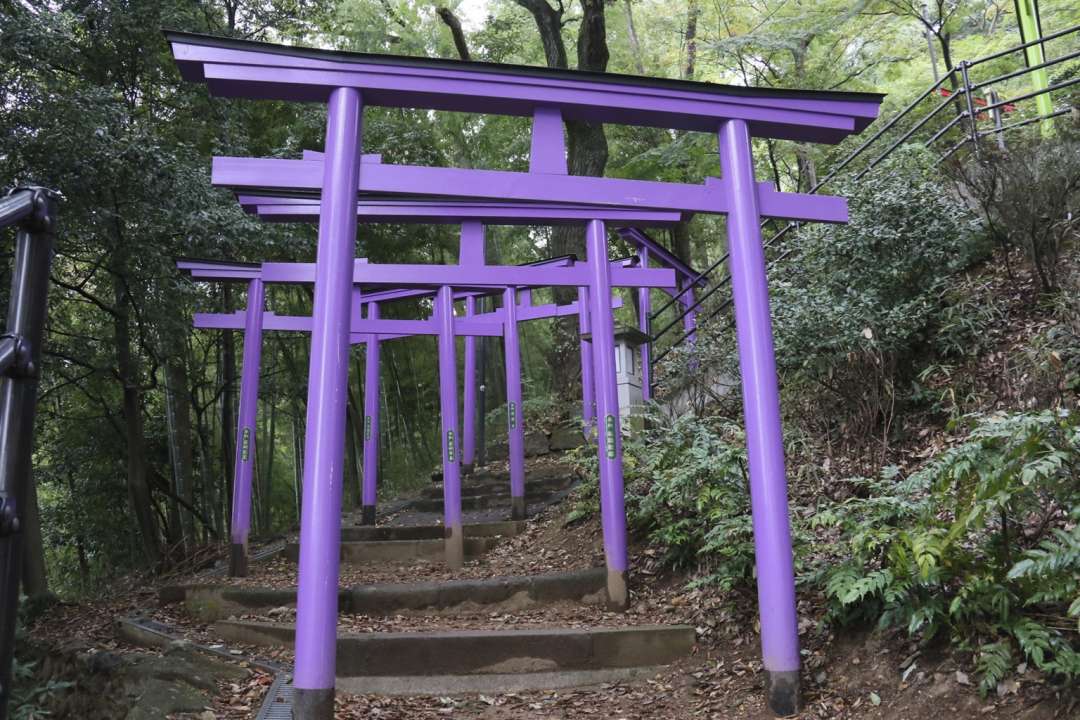
Purple might be the rarest torii color of all! If you would like to see purple torii and experience the entire torii rainbow in one trip, look no further than Ashikaga Orihime Shrine in Tochigi Prefecture! Here, you can walk the “Seven-Color Torii Path.” As this shrine is known for enmusubi, the power of connections, each color of torii stands for a different kind of relationship from romantic (red) to business (purple).
Pink
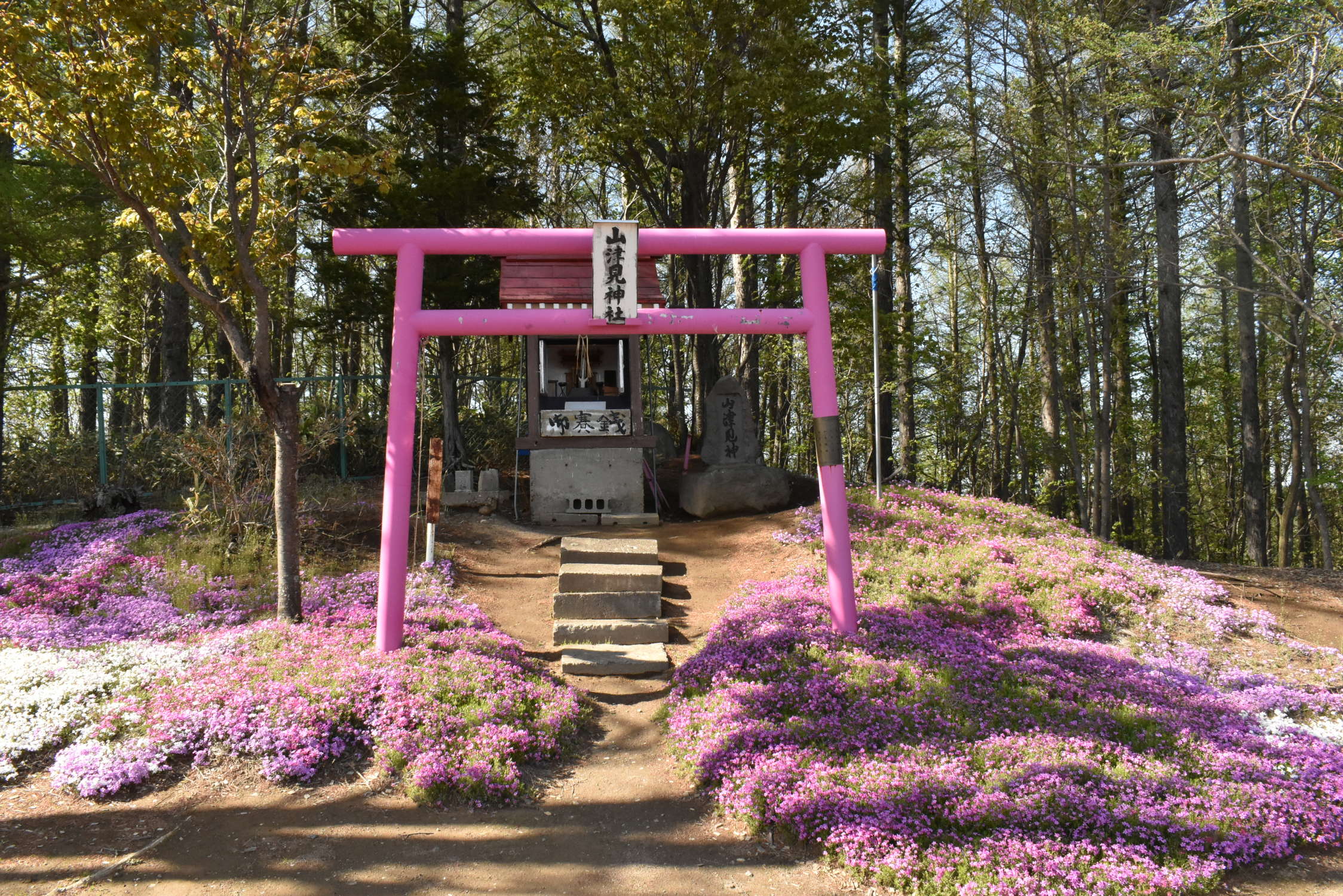
Pink isn’t usually included in the rainbow, but this torii is too pretty not to include! In springtime, the pink torii in Hokkaido’s Higashimokoto Shibazakura Park harmonized perfectly with the blushing blossoms of the shibazakura, also known as moss phlox. These flowers from North America are beautiful and functional as they are a natural form of weed control for hilly slopes where rice is grown. A second pink torii is hiding further up the hill, where it stands in front of the mountain god’s Yamatsumi Shrine.
Bonus: Gold
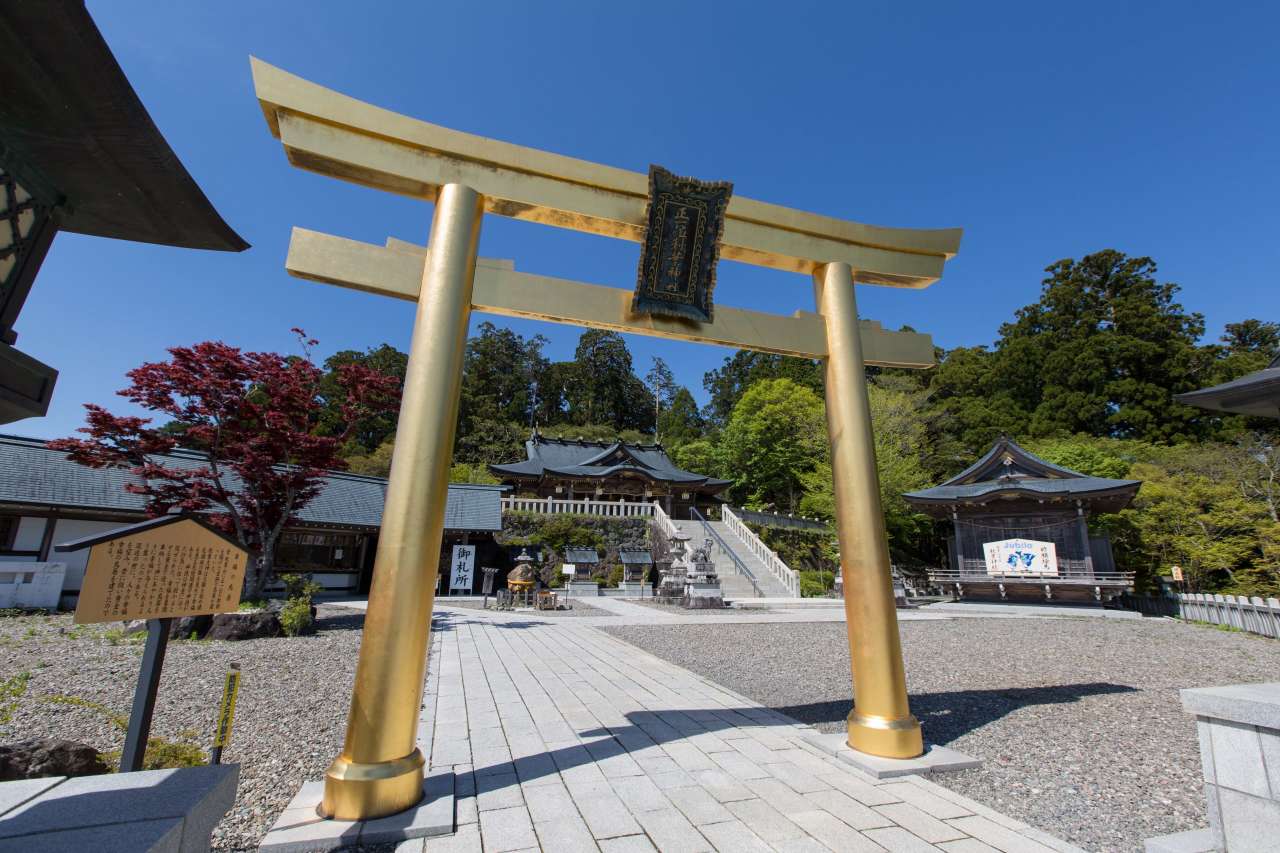
There’s gold at the end of this rainbow! One of the most famous shrines with a golden torii is Akihasan Hongu Akiha Shrine in Hamamatsu, Shizuoka Prefecture. In the Edo period, a samurai clan donated a shining "Torii of Happiness" made of bronze and covered in gold foil. Although the original gate was destroyed during World War II, it was rebuilt in 1993 to celebrate the marriage of the emperor and to wish for everyone’s happiness.
Conclusion
Color isn’t the only kind of variety among torii gates. Torii come in all shapes and sizes. Some are even made of glass, ceramic, speakers, and Legos! See how many different torii you can find on your next trip to Japan.
Did you know that torii can be found not only across the Japanese islands but also all over the world from London and New York to Egypt and Singapore? There might even be one near you. Check out my global torii map—new entries are being added all the time!
Want more torii-tastic content? Follow me on Twitter/X or Bluesky (@KaitlynUgoretz) for new posts about torii every Tuesday (#ToriiTuesday).

|
Kaitlyn Ugoretz is an Instructor and Associate Editor at the Nanzan Institute for Religion and Culture in Nagoya, Japan. She is an expert on Japanese religions, globalization, and media. In her free time, she hosts the award-winning educational YouTube channel "Eat Pray Anime" and hunts for torii gates around the world. |

















































